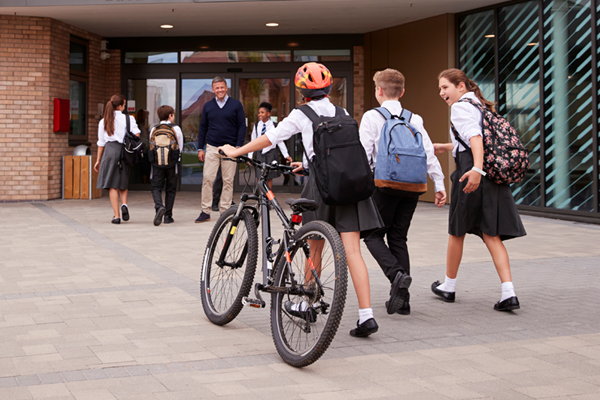
At the beginning of March each year, state secondary school places are announced and parents prepare excitedly for the move to ‘big’ school. For a parent of a SEND child, the next step is far from easy.
For many in mainstream education it will mean transition to a totally new type of school, leaving the cosy confines of a primary school, and entering a much larger cohort with unfamiliar faces in a multi-sited and more boisterous setting. All the confidence that a Year 6 child has acquired, through familiarity with the setting and being the oldest in the school, vanishes. A newcomer in year 7 has to start again as the youngest and smallest one of many, with lots of unfamiliar faces. In addition, instead of a consistent class teacher, the pupil will meet a great many more staff, who are unfamiliar with their needs. Preparing a short profile, which can be handed to a new teacher, at each lesson, is a good way to ensure your SEND child’s personal needs are brought to their attention.
The secondary model requires more independence; your child will need to navigate the different classrooms and organise themselves to get round the school according to the school timetable. Lunch may be in sittings or may involve a self-service style canteen, with bewildering options. Usually, parents have less contact with the school and do not accompany the child to school. To ease transition, make sure there are clear channels for communicating with teachers, e.g. a home/school book, or email address of the tutor or SENco, to keep the school abreast of how your child is managing. A buddy system is another way to ensure younger children can be guided through unfamiliar sites and systems by an older, familiar face.
A child with SEND may have come to rely on the at-hand support provided by a Teaching Assistant; however, having an accompanying adult when a year 7 makes a SEND child stand out from the crowd, depleting confidence, and is not always welcomed in a busy secondary classroom. In addition the single TA may be replaced by a variety of Learning Support Assistants organised by subject. Some schools provide a nurturing base which allows the SEND child to access smaller classes or supervised breaks, when the number of peers is overwhelming. Ask the SENco how additional support will work in secondary.
A child with an EHC plan moving from primary to secondary will have a different admission route. The new secondary school will be named on their plan, and the LA will need to do this in good time, for support to be put in place. The secondary teachers will need to be informed and be able to plan lessons which take into account your child’s needs. Savvy SENcos will put their heads together to action this at the Year 5 annual review meeting, to allow enough transition time to arrange for staff to be hired, resources bought and facilities adapted. Managed taster days will be more important for an SEND child, who will benefit from more visits and may appreciate a photographic record of the new school, a map of the route or even a sound map of the noises your child will encounter.
The journey to school presents another new experience, as many secondary schools will be further away than local primaries. Does your child qualify for school transport? Find out and pace out the journey with them, beforehand, if possible. Many schools run mobility training for children with SEND needs, to teach about travel on public buses and trains.
Cooperation between the child’s teachers, support staff and parents is a vital component of a good transition to secondary. One advantage of the lockdown was that meetings between schools and external agencies such as speech and language therapists or SEND advisors went online. At age 11 a child will have developed their own views, about how they want to be supported and which school they wish to attend. Parents should make sure these views are voiced at the transition meeting, and discussed in language that is appropriate to the young person’s processing. The SENco will need to compose a written transition plan for the move, which parents contribute to. Make sure you know how to comment and raise concerns if the plan is not what you want.
Of course, not all children will be moving schools, some schools continue through to the senior level, seamlessly. Many independent schools run as through-schools, but still may have new children joining in senior years. Some pupils will have had to sit an exam to move through to the senior school. Check in advance, however, whether the school offers exam concessions for SEND children who need them. Will you get notice, if your child doesn’t achieve a place at the senior school?
For many parents the transition will involve leaving a mainstream setting for a special school. This is a time of mixed emotions, leaving behind the neurotypical cohort that have been your child’s friends, and fitting in to a specialised setting, which may provide more tailored support in the years leading to 16, and beyond. There are huge advantages to look forward to in a special school, small class sizes, trained staff and differentiated curriculum, as explained in our website article. Special schools are practised in transitioning children who dislike a change of routine. Make sure you ask what they put in place to help your child settle in happily.
In all cases, parents are advised to prepare themselves for the transition time; it is a milestone for the whole family. If you have doubts about transition to secondary, our GSG advisors are here to help.
